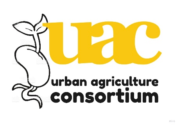Did you know that one nutrient dense spinach leaf has the same mineral content as 14 industrially produced spinach leaves? Or one nutrient dense carrot has the same polyphenol content as 200 industrially produced carrots? This opens up exciting prospects for how we can bring highly nutrient dense food production into all kinds of urban spaces and communities with wonderful impacts on health.
On 2nd March, a wide range of policy influencers came to our third PING on the connections between soil health and human health, focussing on where these two things meet – in the provision of nutrient-dense food to all.
We explored the right to nutrient dense food and why we make do with such low, and even harmful standards of quality in mass-produced foods. We explored research showing how people don’t want affordable food to be empty of nutrients, we drafted the kinds of clauses we’d like to see in a Soil Health for Human Health type policy, and saw how policy makers are innovating at the County level, with an eye on their wider landscapes as sources of nutrient dense food.

Labels like Organic or Regenerative or Local or non-GMO etc do not correlate to the inherent nutrient quality of the crop and are effectively process standards, not quality standards
Dan Kittridge. Founder of the Bionutrient Association. ‘New definition of nutrient density goes beyond labels’. Agrarian Journal. Summer 2021.
<<< Please watch the recording of the session
In our policy drafting activity we asked:
What would I like to see included in a deliverable, cross-departmental policy that championed the production of nutrient dense food?
Here’s what we said…
Here’s our co-created list of 43 policy must-haves and considerations – I have tried to put them into helpful categories, some of them belong in more than one category. What would you add? Please use all of these in your own policy thinking, making & influencing…
| LAND | ||
| More land made available for community farms | Secure access to land to upscale food growing for community and social enterprise models | Prioritise applications for new land use / new business start ups to deliver nutrient dense food |
| Planning policies that are supportive and enabling of local food infrastructure. Including for housing developments to provide food growing land and affordable landworker homes | The sure fire way to get children eating nutrient dense fruit and vegetables is to create a welcoming community food project on land close to where they live and get them involved in growing it | |
| FOOD AS AN ENABLER / CONNECTER | ||
| Highlight food’s role as an enabler to link all different departments. | Linking up where food comes from, how it is produced, requirements / complications of the supply chain | Schemes that link emergency food providers with local farms for direct sales |
| Nutrient density is useful for Public Health who often will understand it. How do we make it appealing to planners and the other ‘silos’? | Link soil health, crop health, animal health, food quality, and human health and nutrition | Have a co-design process that includes target audiences (e.g. people experiencing health inequalities and/or food/nutrition insecurity) |
| I’d like to see a joined-up / interdepartmental approach to engaging with landowners, farmers, communities – getting people round the table to understand challenges and opportunities to realising the upscaling of community-based food production | School rankings to include their access to food growing and eating fresh, nutritious food. | Food champions being funded to deliver across multiple council areas to promote sharing of best practice and cross cutting policies |
| ELEVATE AND PRIORITISE NUTRITIONAL JUSTICE | ||
| I learnt that growing nutrient dense food can sequester more carbon (see Elizabeth Westaway’s presentation in the recording) | Start with a goal of high quality food then get everyone to produce food using regenerative / agroecological practices | We need to start using food as medicine – instead of prescribing a cocktail of medications |
| Taste is linked to nutrient density, soil carbon is linked to nutrient density. There are multiple benefits off nutrient dense food. | Growers, farmers talking with distributors, wholesalers, retailers, chefs doctors, GPs talking about nutrient dense food. | Reference the right to nutritious food |
Evidence-based latest research – that soil health and Nutrient density are completely linked – coming out from Bionutrient Food Association (USA) David Montgomery | Write policy to support food production practices that enable greater nutrient density | Lets focus on food environments that prioritise food quality |
| There’s definitely a need for a food quality standard based on nutrient density (see quote above) | Put health, wellbeing and justice at the core of all policies | |
| FRAMING AND LANGUAGE | ||
| stop talking about food poverty and food insecurity, let’s talk about nutrition security | As someone who, with the support of Elizabeth (GRFFN) is exploring ways of talking about nutrient density in relation to productivity of urban agriculture, we need to be clearer and better at definitions and clarity around the notion of value | Labelling in plain English |
In nutrient dense food, every mouthful matters and is beneficial. No land is degraded or wasted, no health degraded or wasted. | Right to nutritional food (important for language & framing) | Healthy food = healthy for people, ecosystems and animals. |
| Let’s use optimal health as the root of decision-making for seed-varieties, food production approaches and food processing | Create and use a lay-persons glossary of agroecological speak to enable other people to understand | We need a food systems approach that prioritises health – soil health, plant health, animal health, healthy food, soils and people |
| Fresh, nutrient dense food tastes better and has better shelf life so less food loss and less food waste | Access to affordable, healthy food as a social justice issue | Nutrient dense means grown as close to the plate as |
| Building and using a different narrative around food affordability – one that centres on good quality food and improved financial situations for people (see FFCC presentation in the film above) | ||
| INVESTMENT AND RESOURCING | ||
| Investment in local skills, local produce that improve the quality and availability of nutrient dense food | Rates relief for first 3-5 years for regenerative food enterprises | Grant funding for start ups championing nutrient dense food provision |
| Food champions being funded to deliver across multiple council areas to promote sharing of best practice and cross cutting policies | ||
| ECONOMIC INCLUSION AND INNOVATION | ||
| Firstly, give people enough money to buy sufficient food. To begin with, many people cannot afford food, it’s not that they’re not eating nutrient dense food, they’re often not eating any kind of 5 a day. Many people regularly skip meals. | Next, work on more of the least well nourished eating some kind of fruit and veg (/nutrient dense preferably where available). There’s a lot of research already about what works. | Shift from a fixation on food production based on yield to food production based on nutrient density |
| Regulation of food retailers and processors to make sale of unhealthy food less profitable | Regulation and reduction of destructive farming |
This Policy Influencers Network Group session was shared by people from:
UK (reach) organisations: The Food Farming and Countryside Commission, Growing Real Food for Nutrition CIC, Our Food (Monmouthshire & Brecon), Social Farms & Gardens, Cranfield University, The Real Farming Trust, Sustain, Royal Agricultural University
Place-based organisations: Nottinghamshire County Council, Leicestershire County Council, Northamptonshire, Foodwise Leeds, Bristol Food Network, Cambridgeshire & Cambridge CoFarm, Lancaster/Lancashire, Peterborough,

